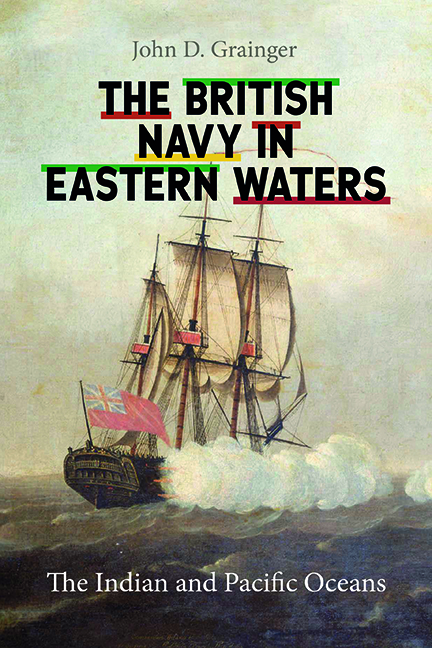7 - The Decisive War (1782–1783)
Published online by Cambridge University Press: 26 May 2022
Summary
Sir Edward Hughes’ seizure of control of Trincomalee in January 1782 followed his earlier seizure of Negapatam. There were now no French or Dutch ports left under their control in India. Rear-Admiral Suffren came into the Bay of Bengal with his squadron (which had been enlarged by the capture of the British Hannibal (50) on the way) and a set of transports carrying over 3000 French soldiers, their equipment, supplies, and war material. In South Indian terms this was a major force, given the greater military effectiveness of European troops. Suffren's aim, therefore, was first to land this force, whose presence would actively preoccupy the British land forces; they could join with Haidar Ali in a campaign, while encouraging others to take up an anti-British stance, if not active measures. He had first to make contact with Haidar Ali, preferably before he landed the troops.
Suffren had gone on to Mauritius from the Cape, having left some of his soldiers there to defend the Dutch colony. At Port Louis his senior officer was d’Orves, who conveniently died, putting Suffren in the naval command. In the Bay of Bengal he and his augmented force – ten line-of-battle ships, two 50s, four frigates –fought a series of battles with Hughes for the next year. These are very interesting from a technical point of view. It is theorised that Suffren had developed a new tactical theory, rather like that of Nelson at the Nile, or Rodney in the West Indies, whereby his ships could envelop the enemy by attacking from both sides, instead of lining up parallel to it as was the normal method. Hughes, with eight line-of-battle ships, one 50, and a frigate, was considerably outnumbered, and fought in the usual way, broadside to broadside. Suffren, however, rather like Rodney at first in the contemporary campaigns in the West Indies, suffered from idle, disobedient, or uncomprehending or incompetent subordinate captains, some of whom exhibited signs of cowardice, so that enforcing his ideas proved extremely difficult. (Rodney succeeded by taking his fleet on a month's series of exercises and instilled discipline into his captains; Suffren did not do this.)
- Type
- Chapter
- Information
- The British Navy in Eastern WatersThe Indian and Pacific Oceans, pp. 119 - 134Publisher: Boydell & BrewerPrint publication year: 2022

